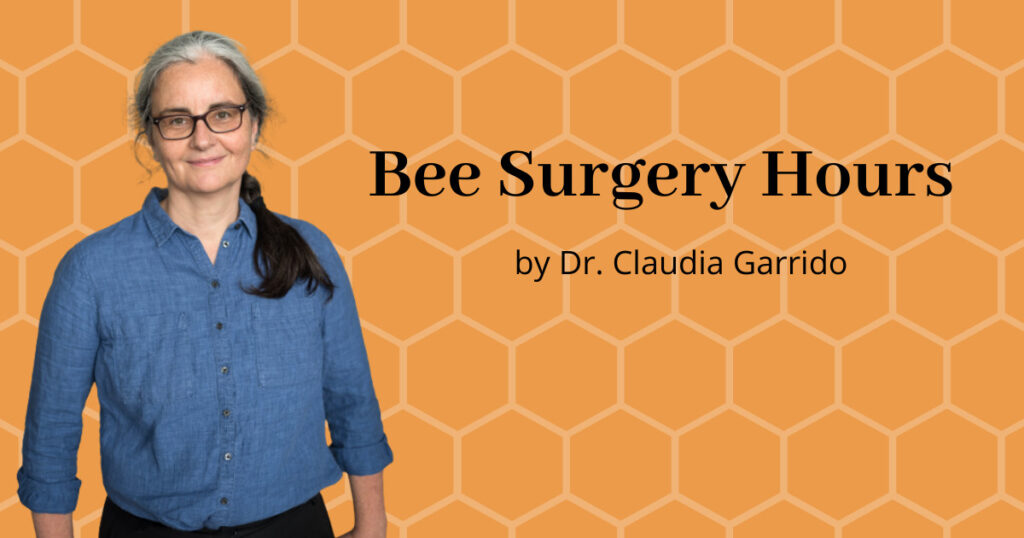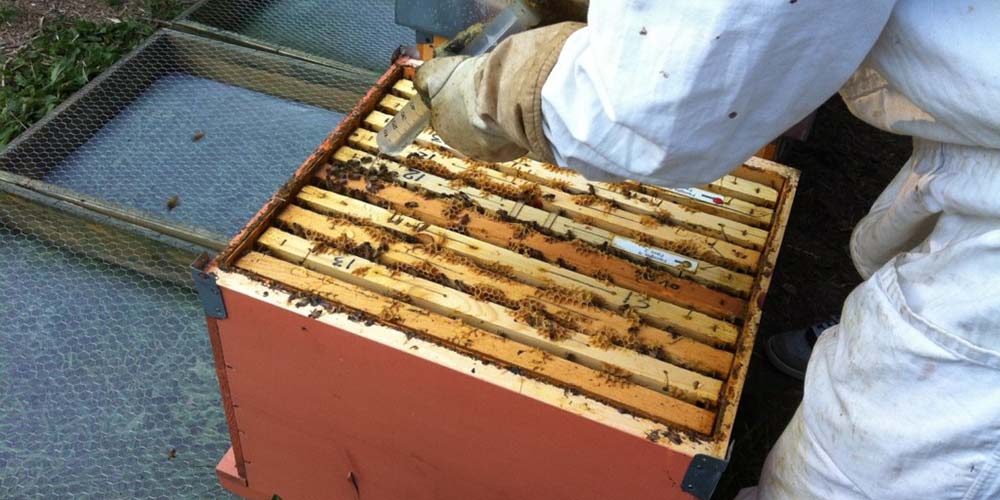There are many factors influencing bee health. This is so obvious to me, that I failed in pointing it out when talking about varroa. This is called the “curse of knowledge” and it happens despite my attempts to avoid it. So, to make this clear: Varroa isn’t the only reason for colony losses or bee health impairments of any kind. Losses are just the extreme by which “bee health” often gets measured.
You may already expect a “however”… and you did right. Because, unfortunately, this is often taken as an excuse to focus on another single factor. Pesticides being one of the most popular. However (there it is!), that pesticides, weather conditions, forage availability, etc. also influence colony survival doesn’t mean that varroa isn’t important. As it happens often in life, sometimes we have to deal with multiple things at once.
Different factors influencing bee health – and levels of influence
Already last time I wrote about bee health beyond varroa and I’m repeating the importance of good practices over and over again. Here and on my social media (mainly LinkedIn. I’m trying Instagram out, but I’m still not sure about it.). That may be another reason why I didn’t really consider it would be necessary to stress this multiple factors thing. But now it’s done and I would like to give this another perspective.
This “it can’t be only varroa”-thing was very prevalent beginning of this year when we had to realize the large colony losses in the US. I’m sure it will continue for quite a while. So, it was good to find a paper that deals with just that: The different factors influencing bee health and especially colony losses. The authors analysed 3,210 survey data sets from Pennsylvania that were recorded from 2017 to 2022. So quite a data base to rely upon.
And first things first: Also in this analysis the result was very clear – beekeepers who treated their colonies against had lower losses than those who didn’t. It was the greatest influence. But not the only one. The other factors could modify the effect of varroa. Poor nutrition, for instance, could enhance the negative effects of the mite. Long seasons could increase the infestation – remember that varroa infestation doubles every month when there’s brood. And rainy summers also increased winter mortality. Because rainy summers mean less foraging and weaker colonies in fall…

Varroa infestation doubles every month in presence of brood. So, eight mites in February become 1,024 in September. The effect of the infestation is influenced by nutrition, the bees immune system, associated varroa treatments, etc. A rainy summer may make these effects even worse.
Interactions between factors
From the what I said above you already can see that there is interaction between the factors influencing bee health. So, let’s take the beekeeper who doesn’t treat his colonies against varroa – by this alone increasing the risk of winter mortality. Then, there’s also a rainy summer, so that the colonies can hardly forage. On the one hand, this means that the colonies can’t profit from the positive effects good nutrition has on bee health. Like better resisting virus infections (like DWV, which is associated with varroa), larger fat bodies, longer life-spans… On the other hand, they don’t breed as much, because of the lack of food. Which means weaker colonies before winter. Which again, reduces the chance for survival…
This beekeeper will have larger colony losses than the one who had the same rainy summer, but treated against varroa. He will still have a worse winter survival than after an excellent summer. Poor nutrition doesn’t help. But it didn’t also reinforce the many negative effects varroa has on bee health. Which are the contrary of the effects of good nutrition I listed above: transmission of DWV, smaller fat bodies, reduced life-span. So, the first beekeeper has the effects of poor nutrition and varroa infestation interacting and reinforcing each other. The second one “only” deals with a bad year.
What’s in your control and what is not (as much)
So, now comes the crucial part. When I talk so much about varroa, it’s not because I dismiss the other factors that influence colony survival or bee health. I’ve written and talked about good practices way too much to be accused of that. It’s because it’s the factor you totally have in your hands. Nobody can control the weather. Even the availability of flowers it’s not easy to control – this will change from year to year depending on so many different factors. But you can build up a routine of good practices. Varroa treatments are an essential part of that.
And again: levels of responsibility
But here we also have a good example of the three levels of responsibility, I’ve already talked about related to available varroa treatments. So, let’s break it down to colony losses.
- First, we have the individual level. This includes good practices in general, so varroa treatments, choosing a good apiary site with good forage, etc. This is the responsibility of every single beekeeper. Nobody will take that away from you.
- Then, we have the community level. This goes from the local association that offers trainings and mentoring for good practices, for instance. Up to national or even international organisations that represent beekeepers’ interests.
- Finally, there’s the political level. In the cited paper, pesticides didn’t play a role. But policy makers make the rules on how much pesticides are available and used by farmers. Also if good varroa treatments are available for beekeepers. Or if there are spaces in which honey bee colonies find enough to forage on (e.g.,by biodiversity protection).
The political level will also influences if the summer is rainy, too hot, or whatever by trying to slow down the climate crisis or not. And the associations have to say what their stakeholders need and expect. And again the single beekeeper will have to learn and improve his practices and talk to the community level to keep that one informed. You see? So many interactions.



